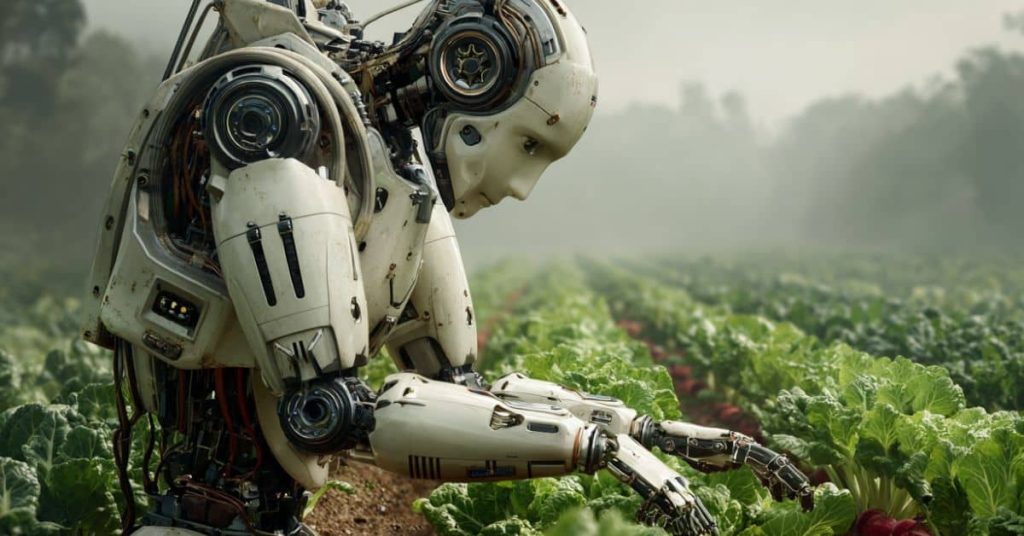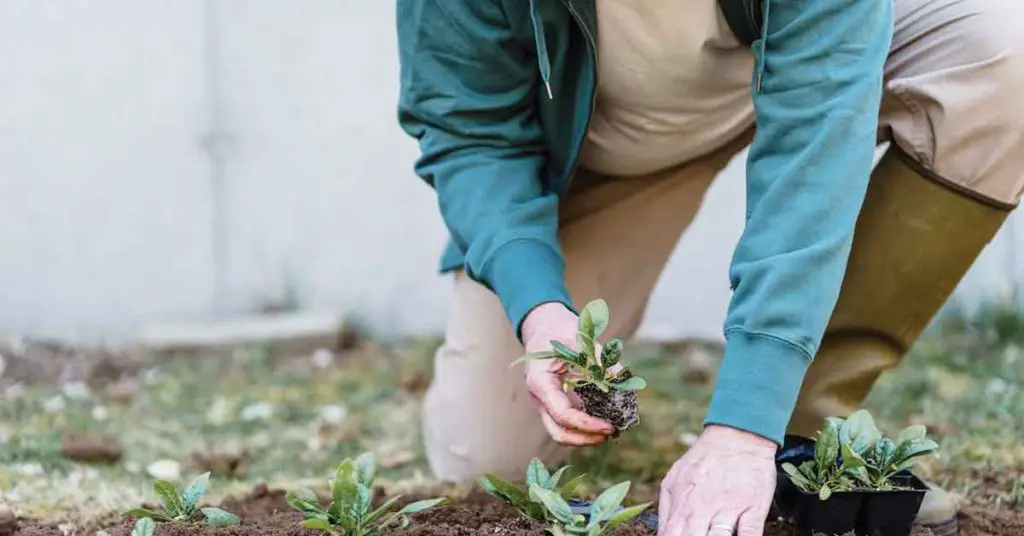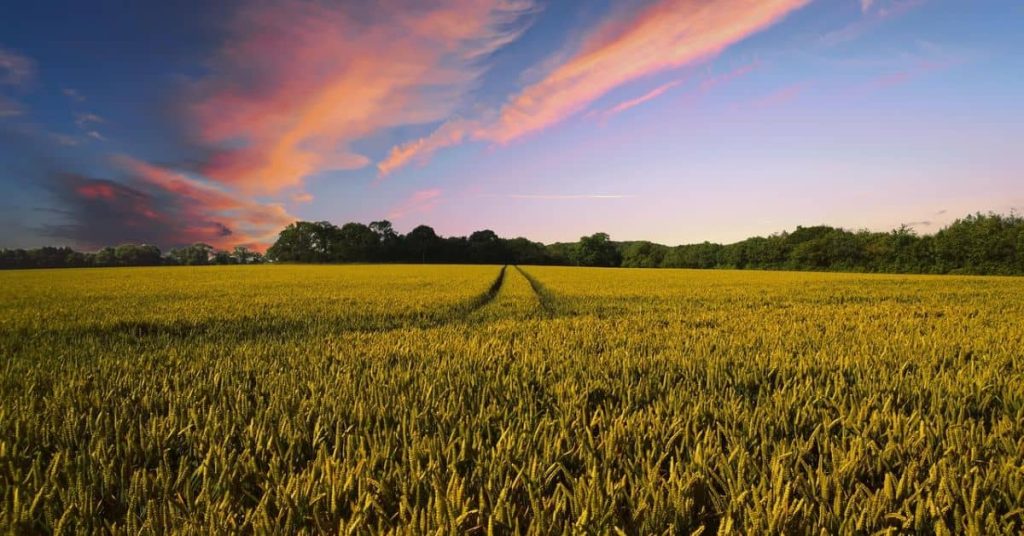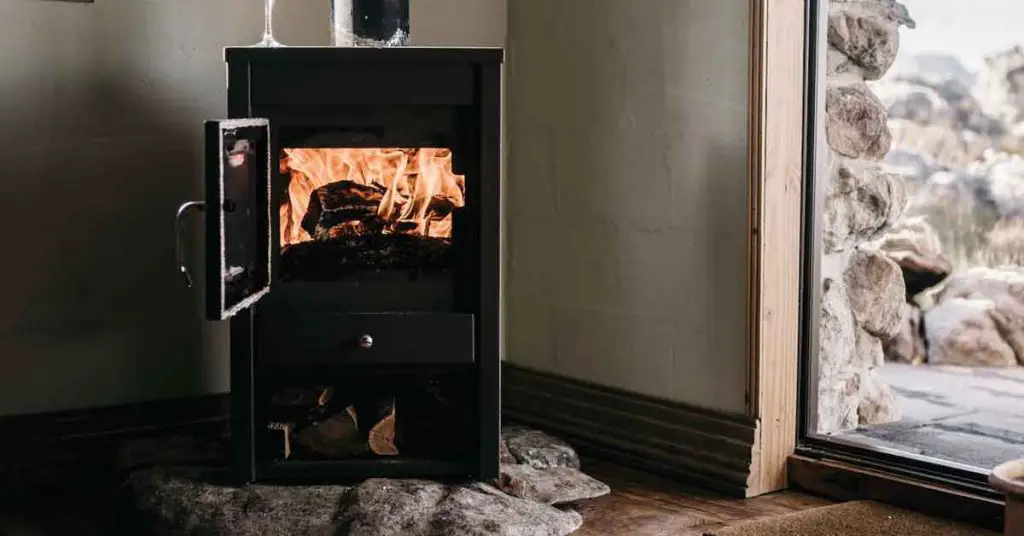What Even Is AI in Homesteading?
Last fall, I used an AI app to help figure out when and where to rotate my garden beds. It took into account my soil test results, last year’s crops, frost dates in my area, and even how much sun each part of the yard gets throughout the day. I’ll be honest, I didn’t think it’d be all that helpful. But I tried it, and my cabbage and beans have never done better.
Need quick answers? Jump to the AI in Homesteading FAQ section for simple, no-fluff explanations.
So what exactly is AI in homesteading? Well, it’s not robots building barns or taking over your land. It’s more like a digital farmhand. Think of it as a tool that helps you plan, track, predict, and even automate the small daily stuff that adds up. Things like knowing when to plant, spotting tomato blight early from a photo, or automating chicken coop doors at sunrise.
If you’ve ever asked Siri about frost dates, used a soil sensor that connects to an app, or checked a weather-predicting tool before watering, you’ve already dipped your toes into AI in homesteading.
What’s Changed in 2025?
A few years ago, most AI tools were geared toward big farms or urban smart homes. That’s not the case anymore. Now, you’ll find tools designed for the rest of us, backyard growers, off-grid cabins, suburban gardeners who raise a few hens, or families growing their own in Midwest states like Ohio or Missouri.
In states like Colorado, folks are using AI-powered weather apps that connect with their drip irrigation setups. A woman I spoke to at a seed swap in Fort Collins said her system turns on the water only when her soil sensors say it’s dry enough and there’s no rain in the next 12 hours. Saves water and guesswork.
You might be wondering:
- “Isn’t this all super high-tech or expensive?” Nope. A lot of tools are app-based or run off solar-charged devices.
- “Do I have to be connected to Wi-Fi all the time?” Not really. Some AI tools work offline or update when you’re in town and have signal.
- “But what if I’m not ‘techie’?” Neither are most of us. I had to Google how to pair a Bluetooth soil tester. Twice.
A Few Ways I’ve Seen AI Helping Real Homesteaders
- In Pennsylvania, one family uses a voice-controlled app to log goat births and milk yields. It’s faster than scribbling it down on a napkin.
- A homesteader in Oregon tracks her food storage and shelf life with a pantry management app that scans barcodes and suggests recipes.
- Down in Texas, a small farm automates shade cloths over their raised beds using a simple AI scheduler based on light intensity.
One guy from Tennessee told me, “I never thought I’d be using AI, but my kid set up a system that opens the coop at dawn, texts me if the water trough gets low, and even tells me when the pigs are rooting in the wrong spot.”
That’s the heart of it right there. AI in homesteading doesn’t replace your know-how or grit. It just adds another tool to your belt, one that keeps learning as you go.
Ready to see how it’s being used for crops, animals, and day-to-day tasks? Let’s get into the good stuff.
Can AI Really Help Off-Grid Homesteaders in 2025?
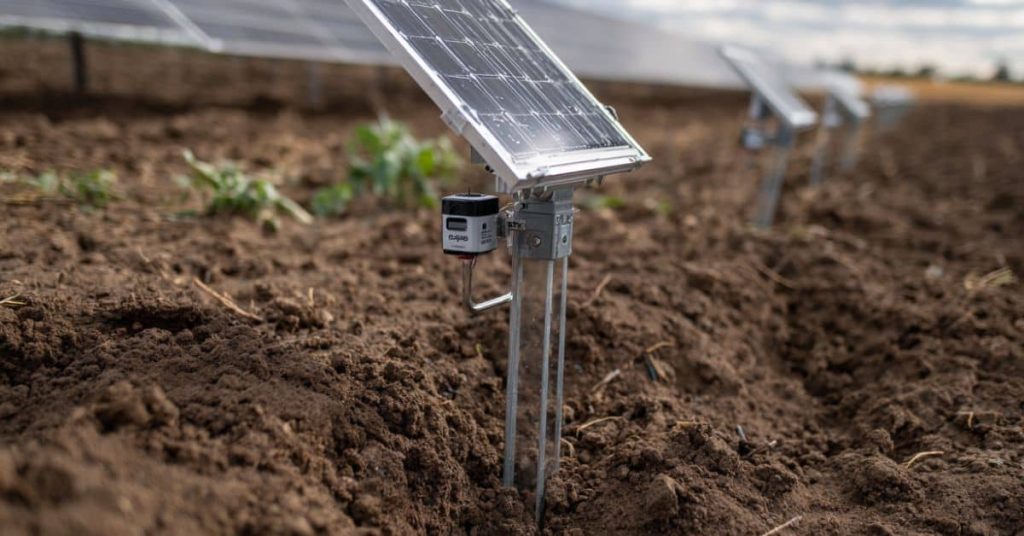
When I first heard about AI in homesteading, I thought, “Well that’s cute, but it probably needs Wi-Fi, a fancy subscription, and a degree in robotics.” I live off the grid most of the year with a small solar setup and spotty cell service. Turns out, I was wrong about needing all that.
These days, AI doesn’t just live in big tech labs or smart condos. There are solar-powered gadgets, battery-friendly sensors, and offline-friendly apps designed for folks like us.
Isn’t AI Just for Big Tech or Smart Homes?
That’s what I used to think. And sure, some tools still cater to large operations. But there’s a quiet shift happening. Backyard beekeepers in Virginia are using AI apps to monitor hive health. A veteran in Arkansas has Raspberry Pi running on a solar-charged power bank that alerts him when the greenhouse gets too hot. None of this involves high-speed internet or a degree in software engineering.
In fact, a local extension agent I trust said it best: “AI is just a tool. If you can run a compost pile, you can run a sensor.” That stuck with me.
What’s Working for Off-Grid Folks Right Now?
Here’s what I’ve seen work for people across the U.S. who don’t live on the grid:
- Solar-Powered Soil Sensors
These are small probes you stick into your beds. They read moisture and temperature, then connect to your phone when you’re in range. One family in northern Nevada checks theirs weekly when they come into town. Their lettuce beds have held up through three surprise heat waves.
- AI Chicken Door Timers
A guy I met in eastern Kentucky runs his automatic coop door off a Raspberry Pi and a light sensor. No Wi-Fi. He told me it opens 20 minutes after sunrise and closes right after dusk. He says it took a few tries to get the code right, but now it’s hands-off.
- Weather Pattern Trackers
A Texas gardener I follow uses an offline weather logger that pulls from NOAA satellites. The AI inside crunches trends to help her figure out when to skip watering. Last year, she cut her usage by half during August.
- Voice-Activated Notebooks
I’ve started logging milk yields and harvest notes by talking into an AI-enabled voice recorder that stores data locally. No cloud, no syncing. Just good old data I can look at when I’m back home with power.
How to Get Started (Even if You’re Not Tech-Savvy)
- Start small. Try one sensor or automated timer.
- Look for tools labeled offline-friendly, open source, or solar-powered.
- Visit your local co-op or extension office and ask what’s worked nearby.
- Check forums like r/homestead or Permies.com for simple Raspberry Pi projects. Some are just plug-and-play.
Tools That Don’t Need the Internet
You don’t need Starlink to use AI in homesteading. Some tools I’ve seen working on off-grid farms:
- OpenSprinkler with weather-based scheduling
- Arduino-based water level monitors
- Offline pantry tracking apps like Grocy
- Bluetooth greenhouse temp sensors with SD card backups
And for the curious, here’s a solid government-backed resource: USDA’s AI in Agriculture page
They break down how AI works in crop monitoring, irrigation, and livestock care. Great for seeing how these tools are evolving and what’s worth keeping an eye on.
So, Can It Really Help?
In my experience, yes. You don’t need to be constantly connected or spend a fortune. AI in homesteading works best when it’s used like a shovel or a fence post: one practical job at a time. Sometimes it’ll glitch, or you’ll have to tinker with it on a rainy Sunday. But that’s part of the fun.
Next up, I’ll show you how folks are using AI to grow better food, track pests, and make chores a little easier on the knees.
How is AI Being Used in Everyday Farming and Gardening?
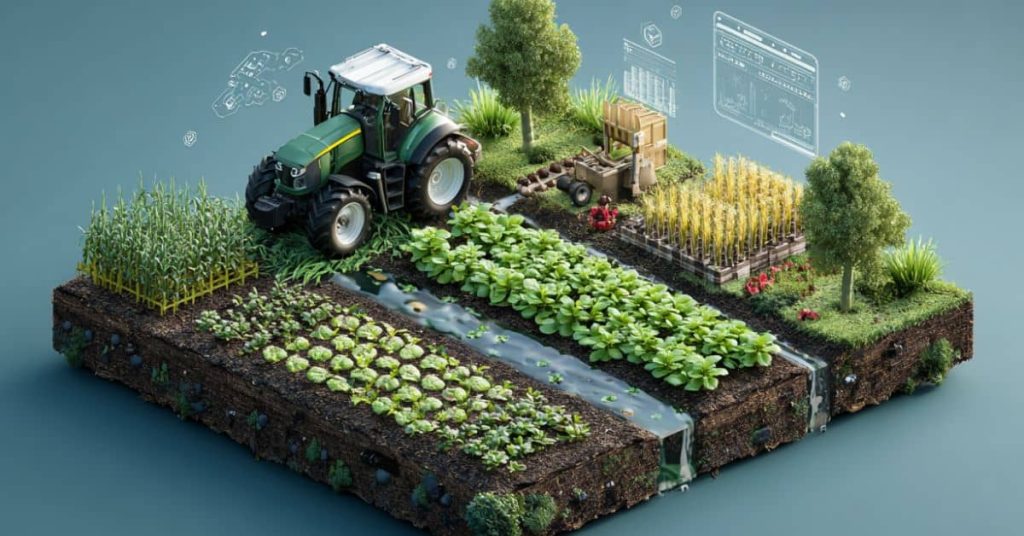
A few years back, if you’d told me I’d be checking an app to help decide when to plant onions or asking a digital helper if my tomatoes needed calcium, I’d have laughed. But here we are in 2025, and AI in homesteading has found its way into the dirt under my nails.
I’ve talked with homesteaders from Michigan to Mississippi, and the same tools keep popping up. They’re not flashy. They just work.
Crop Planning with AI
Back in March, I opened up GrowVeg to sketch out my spring beds. It asked for my ZIP code and growing zone, then reminded me not to plant cabbage where it was last year. I forgot about that. It also flagged that my shady corner might not be great for beans. This wasn’t just helpful. It saved me time and seed.
If you’re wondering, Can AI help plan my homestead garden layout in 2025? The answer is yes. It does better than my old spiral-bound notebook ever did.
Here are a few tools I’ve used or heard good things about:
- GrowVeg: drag-and-drop garden planner with crop rotation tracking
- Gardenate: suggests what to plant and when, based on your region
- ClimateSmart tools (some are free through state extension services): factor in long-term weather shifts
A friend in Iowa said Gardenate helped her plan a fall garden that kept feeding her family into early December. It reminded her to stagger her greens and add cover crops, something she always meant to do but never got around to.
Is There AI in Farming? Yep, and It’s Not Just for Big Ag
When people ask me, Is AI in farming only for the big guys? I always tell them about Travis in Kansas. He runs 5 acres and uses a drone that maps his corn rows. The AI highlights areas that are stressed from heat or pests. He checks it on his tablet in the truck while sipping coffee.
I’m not quite at drone level yet. But I do use a weather app that predicts frost more accurately than the TV guys. It’s been right every time this spring. It runs off NOAA data, adds in satellite imagery, and tells me when to cover my seedlings.
These tools are helping with:
- Early frost and storm alerts
- Soil moisture tracking
- Growth stage predictions for fruiting and flowering
If you’ve asked, Can AI automate farming? the answer is partly. It helps us make smarter decisions, not do everything for us. But honestly, sometimes it feels like cheating in the best way.
Automated Weed and Pest Control
Now this part felt futuristic to me at first. I saw a video from Blue River Technology showing a little robot spraying just the weeds not the crops. I thought, “Yeah, but that’s for someone else.”
Then I tried an app called Plantix. I took a photo of a yellowed leaf and it told me it was an early sign of blight. I followed its advice and sprayed a basic baking soda mix. Caught it early. That plant survived.
Some popular AI-powered tools that real homesteaders are using:
- See & Spray tech for spot-spraying weeds
- Computer vision apps that ID pests and diseases in photos
- DIY setups using cameras with Raspberry Pi to watch for deer or raccoons at night
One woman I follow in Georgia built her own garden cam to spot squash bugs before they took over. She said, “It was fiddly at first, but now it texts me when it sees trouble.” That’s AI in homesteading at its finest, just a little extra help watching the land.
And if you’re into preserving your harvest, some folks are even using AI recipe apps that suggest canning or fermenting based on what’s ripe. I’ve used one to batch recipes around what’s ready in my garden.
If you’ve ever caught yourself asking, Is all this really necessary?, just know that it’s not about replacing what we know. It’s about not having to remember it all. And sometimes, it’s about saving that one crop you would’ve lost without a second set of eyes, even if they’re digital.
How Homesteaders Are Using AI for Livestock
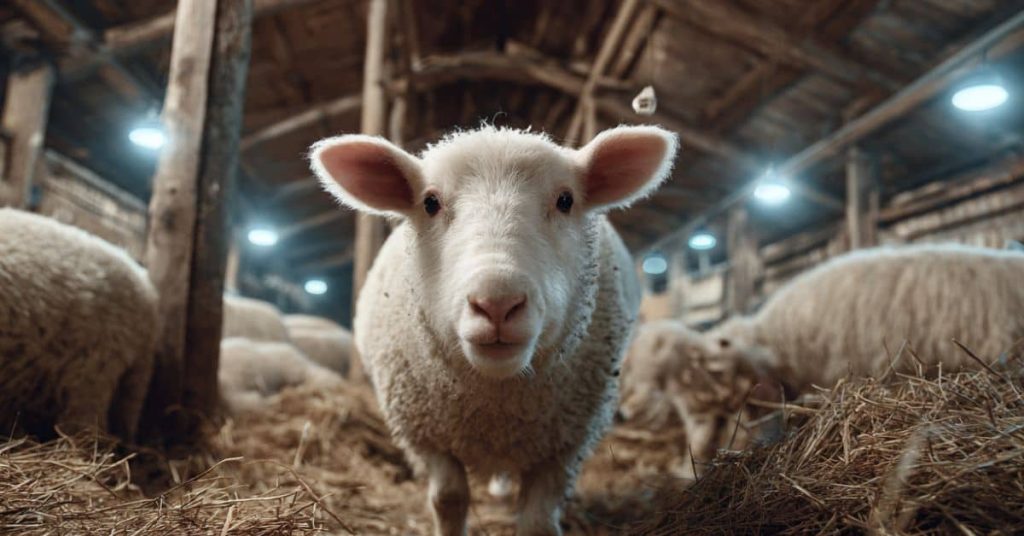
If you’ve ever had to run out in your pajamas at 2 a.m. because something sounded “off” in the barn, you’ve probably asked yourself, Is there a better way to keep an eye on my animals? That’s exactly how I started looking into AI in homesteading, especially when it comes to livestock.
Turns out, AI doesn’t have to mean fancy robots. Most of the time, it’s simple tools that keep track of things for you and give you a heads-up when something needs your attention.
Is AI Good for Tracking Animal Health?
Short answer? Yes. But not in the way you might think.
I started small with a temperature sensor for my goat shed. It was hooked up to a solar-powered unit that sent me a ping when the barn got too cold. Nothing fancy. But that one alert helped me prevent a hypothermia case with one of the kids during a cold snap.
Here’s what I’ve seen folks using across the country:
- Body temp sensors that clip on collars or ear tags
- Water trough monitors that alert you if levels drop too low
- Motion sensors that track how active your animals are overnight
A homesteader I know out in Idaho uses a camera with AI motion tracking to monitor calving. It notifies her when the cow’s pacing increases or lays down for too long. She said, “It’s not perfect, but I’ve caught two hard labors early just from that app.”
If you’re wondering, Is AI good for livestock tracking and breeding decisions?, here’s the deal. It helps you spot changes early; stuff you might miss during the busy season.
Can AI Replace Farmers? No, but It’s One Heck of a Helper
AI in homesteading isn’t about walking away from your animals and hoping a computer takes over. It’s more like adding another set of eyes. Ones that don’t get tired.
My system texts me when the chicken waterer is low, reminds me to check pig weights every Saturday, and logs goat milk production automatically when I speak into a little recorder. It’s not doing the chores, but it saves me the stress of forgetting something important.
Some folks go further:
- A Missouri homesteader uses facial recognition to ID his sheep and track their weight over time.
- In Texas, a small poultry farm uses an AI app to monitor egg production and health signs.
- A rancher in Nebraska told me, “We used to lose calves every spring. Now, the AI alerts us before things go sideways. It’s not perfect, but it gives us a fighting chance.”
You might be asking, How do I even start with this? Try one area first. Maybe water levels. Or heat alerts in the barn. Start where your biggest worries live.
For trusted, practical advice on livestock tech, the University of Missouri Extension has a solid section on livestock tools. They’ve tested a bunch of these in real farm settings and break it down for folks like us.
AI in homesteading, especially with animals, isn’t about being high-tech. It’s about keeping your animals healthier, catching problems early, and buying yourself a little peace of mind. And sometimes, that’s worth more than anything.
Is Homesteading the Future? (And Why Is Everyone Talking About It Again?)
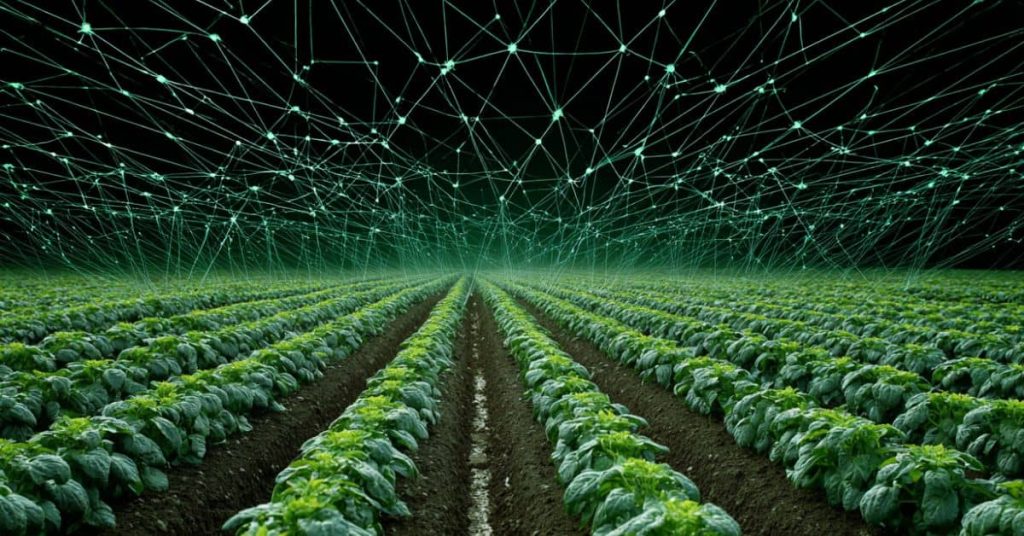
If it feels like more people are talking about raising chickens, making sourdough, and planting backyard gardens lately, you’re not imagining things. Homesteading is making a strong comeback in 2025. Folks from all walks of life are asking the same questions:
- Will homesteading ever come back?
- Why does everyone want to homestead now?
- Is it really possible to do this off-grid or in a suburban backyard?
The short answer is yes. And the longer answer has a lot to do with the world feeling a little uncertain.
Why Homesteading Feels Right Again
In the last few years, people have faced everything from food shortages to power outages to rising grocery bills. I started noticing more neighbors showing up at seed swaps. Friends who used to joke about my compost pile were suddenly asking how to start one.
In 2025, homesteading isn’t about going off the grid completely. It’s about having more control. People want to know they can grow their own food, raise a few animals, and feel prepared, not panicked, if something breaks down.
Take Alicia in North Carolina. She’s not rural, but she turned her 1/4-acre backyard into a food forest with chickens, herbs, and rainwater collection. She told me, “I used to think you had to have 20 acres to homestead. Turns out, I just needed to get started.”
So, Will Homesteading Ever Come Back?
It’s already back, just in a different form.
People are combining old skills with new tech. That’s where AI in homesteading sneaks in. No one’s replacing good soil, a sharp hoe, or the feel of hay in your hands. But now, we’ve got tools that help us remember frost dates, catch pests early, or track goat health from our phones.
Here’s what I’ve seen:
- Parents in Oregon teaching kids to garden using AI-powered planting apps
- Couples in Arizona tracking egg production with simple AI dashboards
- Off-griders in Wyoming using solar-powered AI tools to monitor their water usage
Why Does Everyone Want to Homestead Now?
Ask around and you’ll hear the same reasons:
- Cost of living keeps going up. Homegrown food helps stretch the budget.
- Natural disasters and supply chain hiccups made folks realize how fragile things can be.
- Mental health. Growing your own food and being outside helps people feel grounded.
A friend of mine in Indiana said, “I got into homesteading to save money. But I stayed for the peace of mind.” That hits home for a lot of us.
Where AI Fits Into All This
I wasn’t sure how AI would fit into homesteading when I first started experimenting. Honestly, I worried it would take away from the simplicity. But it hasn’t.
Now I use it to:
- Track when to rotate garden beds
- Get early warnings about weather shifts
- Automate the coop door and get alerts if the water trough gets low
AI in homesteading doesn’t take over. It just helps you keep up. In 2025, you can still get your hands dirty and get help from a robot too.
It’s not about choosing old ways or new. It’s about using both to build a life that works, one day at a time.
What AI Tools Are Working for Real Homesteaders Right Now?
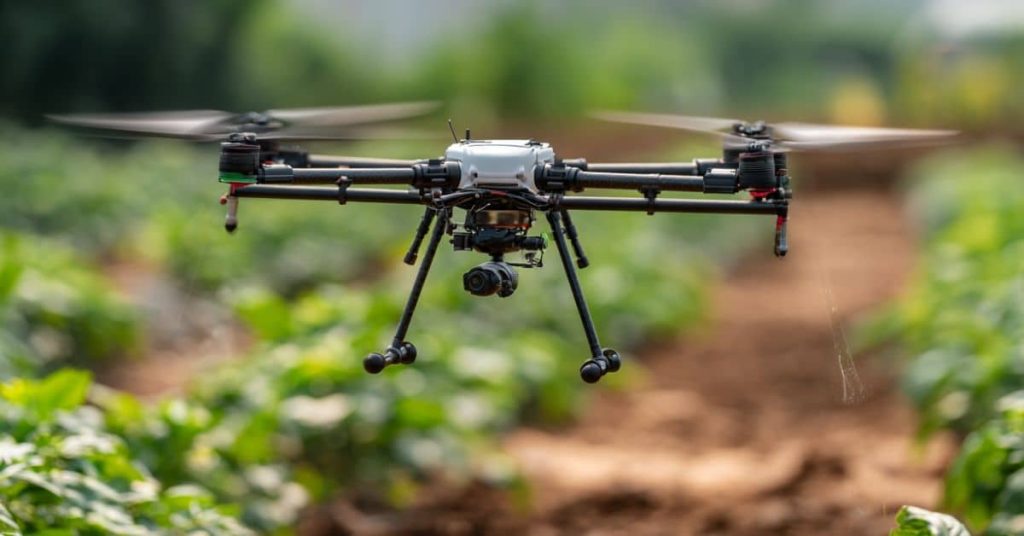
When I first dipped into AI in homesteading, I figured most tools would either be too pricey or require better internet than my ridge-top spot in Colorado could offer. Turns out, plenty of tools are made for smaller setups, rural areas, and folks just wanting to save a little time and sweat.
Here are the ones I’ve seen in action on real homesteads not in some tech lab, but in places with goats, tomatoes, and patchy cell service.
Best AI Soil Moisture Sensors for Small Farms
Last summer, I stuck a little soil sensor into my lower garden bed, the one that bakes in the afternoon sun. It was a cheap unit I grabbed online, paired with a local app, and powered by a tiny solar panel. I wasn’t sure it would be accurate, but it ended up saving my squash during a dry stretch.
These tools help you figure out when to water and how much. That matters, especially when water is scarce or you’re hauling it in buckets.
Here are a few homesteader-tested options:
- Xiaomi Mi Plant Monitor: links by Bluetooth, reads moisture, light, and nutrients
- Ecowitt WH51: syncs with solar-powered stations, stores data locally
- Rachio’s Wireless Sensor: slightly more costly, but good for micro-drip systems
In Alabama, one woman told me she uses the Ecowitt paired with a simple dashboard. “I’m not techy, but this thing just works. I know when my raised beds need water without guessing.”
Budget-Friendly Drones for Crop Health Monitoring 2025
Now this is one of those things I used to roll my eyes at. I thought drones were for big farms or YouTube hobbyists. But I met a guy at a seed swap in Missouri who showed me what his entry-level drone could do. He uses it once a week to fly over his plot and get snapshots. The AI highlights stress spots, usually where pests or drought hit first.
Some affordable models homesteaders have been using:
- DJI Mini SE: small, under 250g, and includes crop-mapping software
- Parrot Anafi: works well in wind, with thermal imaging on upgraded versions
- Ryze Tello with AI overlays: great for smaller lots and early learners
You might wonder, Is this really worth the cost? If you’ve got more than a half-acre in crops, I’d say yes. One farmer near Fresno told me, “It caught a watering line that had busted before I even noticed the plants were stressed. That alone made it worth it.”
AI-Powered Homestead Planning Apps (Even Offline)
This one has been a quiet workhorse for me. I started using an AI garden planner last winter while snowed in. I gave it my seed stash, a rough map of the yard, and my zone info. It sent me a planting schedule I could print and use even when the internet cut out.
Here are a few I’ve either used or seen recommended:
- GrowVeg: visually plans out beds, includes crop rotation advice
- Grocy: pantry and food tracker with preservation reminders
- Planter: good for mobile users, even works offline once you download it
In Tennessee, a couple uses Grocy to track their canned goods. “We used to lose jars in the back of the pantry. Now the app reminds us when stuff’s getting old or low.”
Even better, some of these tie into AI weather forecasting, so your planting plans adjust if the frost creeps back in unexpectedly.
If you want more tool breakdowns and tech reviews tailored to small farms, the folks over at Modern Farmer do a great job. Their tech in ag section focuses on real people, not just big ag companies.
I always say start with one tool that solves a problem you’re tired of dealing with. For me, it was watering. For you, it might be keeping track of pantry supplies or spotting blight before it spreads.
AI in homesteading doesn’t need to be complicated. It just needs to work when you’re tired, busy, or out in the garden with dirt on your hands
Navigating Tools, Apps, and Communities (So You Don’t Go It Alone)
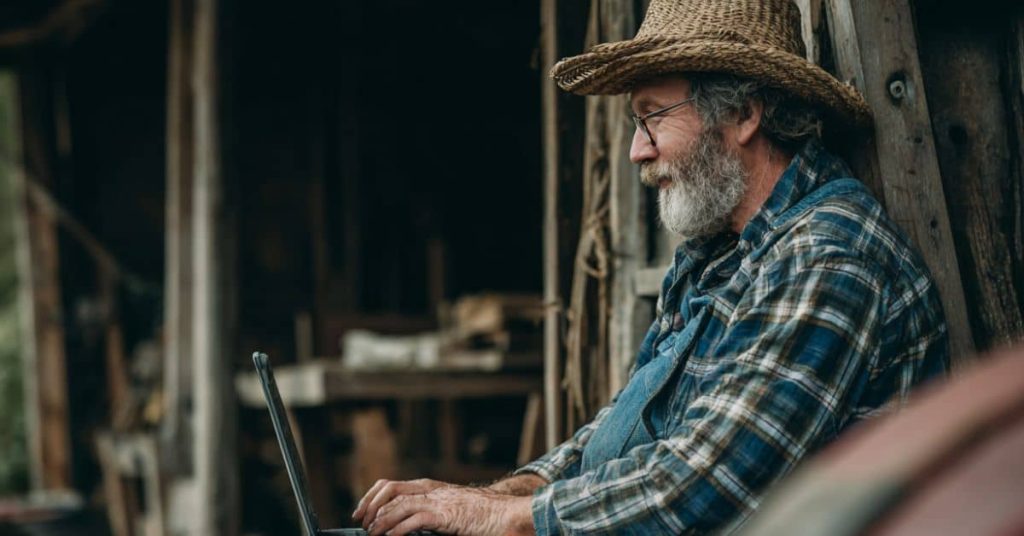
When I first started tinkering with AI in homesteading, I felt like I was the only one in my neck of the woods trying it. I didn’t know where to ask questions or even what to search for. Then I stumbled on a Reddit thread about automating a chicken coop door, and everything opened up from there.
Turns out, there are plenty of places where real homesteaders swap ideas, share mistakes, and post about what worked.
ChatGPT Prompts for Daily Chores, Recipes, or Garden Planning
This one surprised me. I’d been using ChatGPT for writing and troubleshooting, but I hadn’t thought to ask it for help with daily homestead stuff until a friend in Oregon mentioned she used it to make a weekly chicken care checklist.
Now I use it for all sorts of things:
- Planning planting schedules for my Colorado garden
- Creating a canning prep list based on what’s ripe
- Brainstorming goat milk soap recipes with what I have on hand
- Making weekly homestead chore charts for the kids
If you’re wondering how to ask ChatGPT for daily homestead chores help, start simple. Try:
- “Make a 7-day list of homestead tasks in USDA Zone 6a”
- “What should I do with an overripe tomato harvest?”
- “How do I know if my ducks are ready to lay?”
- “Best compost bin setup for small yards in Tennessee?”
One homesteader in Vermont told me she uses it like a brainstorming buddy. “I don’t follow it word for word, but it gives me a place to start when I’m overwhelmed.”
Where to Find Real Advice: Reddit, YouTube, and Beyond
I spend more time on forums than I care to admit, mostly because the best tricks often come from someone who figured it out the hard way. If you’re new to AI in homesteading, these places are gold.
On Reddit, check out:
- r/homestead for DIY builds and general homestead chat
- r/farming for livestock tools and off-grid tech hacks
- r/SelfSufficiency for deeper dives into food preservation and automation
Search terms like “Reddit homestead automation AI sensors” will turn up threads about chicken coop doors, garden cameras, and Raspberry Pi setups that folks have tested in real barns.
On YouTube, I recommend:
- Channels that walk through homestead planning tools
- Real-time builds of AI garden planners or soil testers
- First-person reviews of solar-powered livestock sensors
One video titled “YouTube homestead planning with AI tutorial” taught me how to map my garden using free satellite imagery and a basic AI assistant. It wasn’t perfect, but it got me 80 percent of the way there.
Outside those platforms, places like Permies.com, The Grow Network, and Facebook groups for your state or region are good for connecting locally.
Checkout our article on Homestead Planning Software if you want to learn more about these.
If you want to meet people using the same weather app or composting sensor, that’s where they’re sharing photos and updates.
The thing to remember is, you don’t have to figure out AI in homesteading on your own. There’s a whole online barnful of folks making it work in gardens, backyards, barns, and even tiny apartments. I’ve learned more from a few smart forum comments than I have from some manuals.
Ask questions. Share what worked or didn’t. That’s the real homesteading way.
Using AI in Homesteading Isn’t Replacing the Homestead; It’s Just a New Kind of Tool
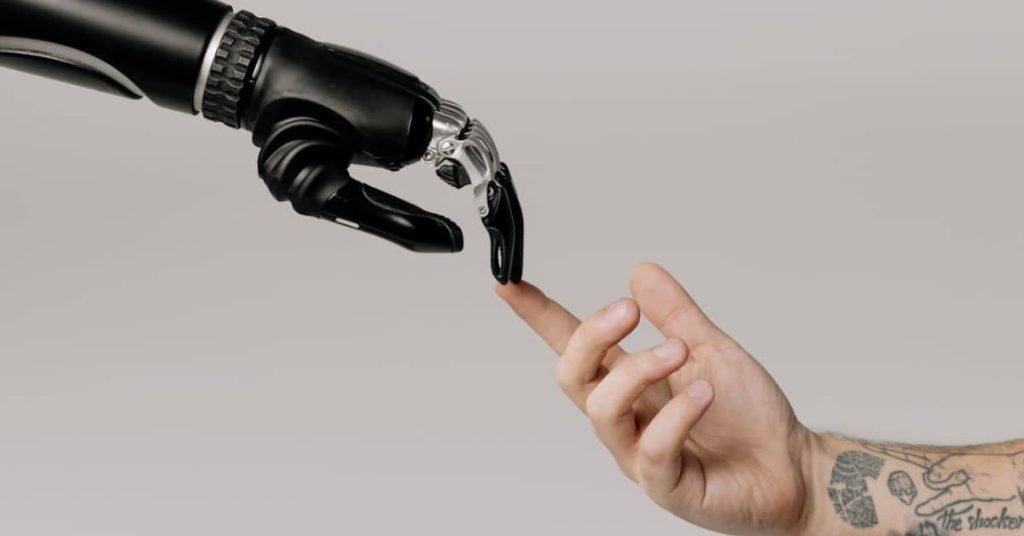
When I first started exploring AI in homesteading, I had more questions than answers. Would it take away from the simplicity I love? Would I end up spending more time staring at a screen than watching my chickens or tending my beans? I wasn’t sure this would work, but I gave it a shot anyway.
Now, a couple years later, I see AI the same way I see a good shovel or a sharp pair of pruners. It’s just a tool. One that helps me remember what to plant where, alerts me when my barn gets too cold, and sends me a nudge when I’m about to forget the compost pile again.
What worked for me won’t be what works for everyone. Some folks love their AI-powered irrigation systems. Others just want an app that remembers when the last goat gave birth. And that’s the beauty of it. You can use as much or as little as fits your life.
Here’s what I’ve found to be true:
- Tech doesn’t replace tradition. I still check the soil with my fingers and watch the sky like my grandparents did.
- AI helps where memory fails. I’m not great at tracking garden rotations or freezing dates, but the tools are.
- Most homesteaders start small. One app, one sensor, one alert system. No need to overdo it.
In Michigan, a couple I met at a local seed swap uses a simple voice assistant to record goat weights and milk yields. “It’s like having a second brain,” they laughed. “One that doesn’t lose the notebook.”
In Arizona, a solo homesteader uses AI to plan meals around what’s coming out of the garden each week. She told me it saves her brainpower and helps her stay on track with preserving food.
Whether you’re deep in the backcountry or working a small suburban lot, AI in homesteading can work with you. It won’t plant your seeds or clean your coop, but it might remind you to check the rain barrel or suggest how to use up all those extra zucchini.
So here’s my question for you: How are you using AI or thinking about trying it?
I’d love to hear your stories. Whether it’s a fancy soil monitor or just asking your voice assistant what to do with leftover beets, you’re part of this new chapter. Let’s keep learning from each other, one practical step at a time.
If you found the above article useful, here are a few more on homestead planning to make your homesteading life a little easier.
- Explore practical homestead layout tips for organizing gardens, animals, and water systems with Homestead Layout Planning Tips.
- Learn how to use digital tools to plan your homestead efficiently with Homestead Planning Software.
- Dive into beginner-friendly homestead layout ideas for any size property with Homestead Layout Planning.
FAQ: Common Questions About AI in Homesteading (2025 Edition)
1. Can I use AI on my homestead if I live off-grid?
Yes, you can. Many AI tools like soil sensors, weather monitors, and timers work on solar power and don’t need Wi-Fi to run. You just need a basic phone or tablet to check the info when you’re nearby.
2. What’s the easiest way to try AI in homesteading?
Start with a garden planner or a soil moisture sensor. They’re affordable, work with your phone, and help with daily decisions like when to plant or water.
3. Do I need fast internet for AI tools on my farm?
Not always. A lot of AI tools store data locally or sync when you have signal. If you live rural, look for apps or devices that work offline or on Bluetooth.
4. Can AI help with animals, like chickens or goats?
Yes. AI tools can remind you to feed, track egg counts, or alert you if temps drop in the barn. Some folks even use motion sensors to keep an eye on goats during birthing season.
5. Is AI in homesteading just for big farms?
Not at all. Homesteaders across the U.S. are using AI on small backyard plots and 5-acre farms alike. It’s all about picking tools that fit your setup, not your acreage.
Disclaimer: The information provided in this article is for general informational purposes only and is not intended to be a substitute for professional advice. The author of this article does not claim to be an expert in homesteading and the information provided should not be relied upon to make decisions about your own homesteading journey. Please do your own research and consult with a qualified professional before making any decisions about your homestead.
Share via:
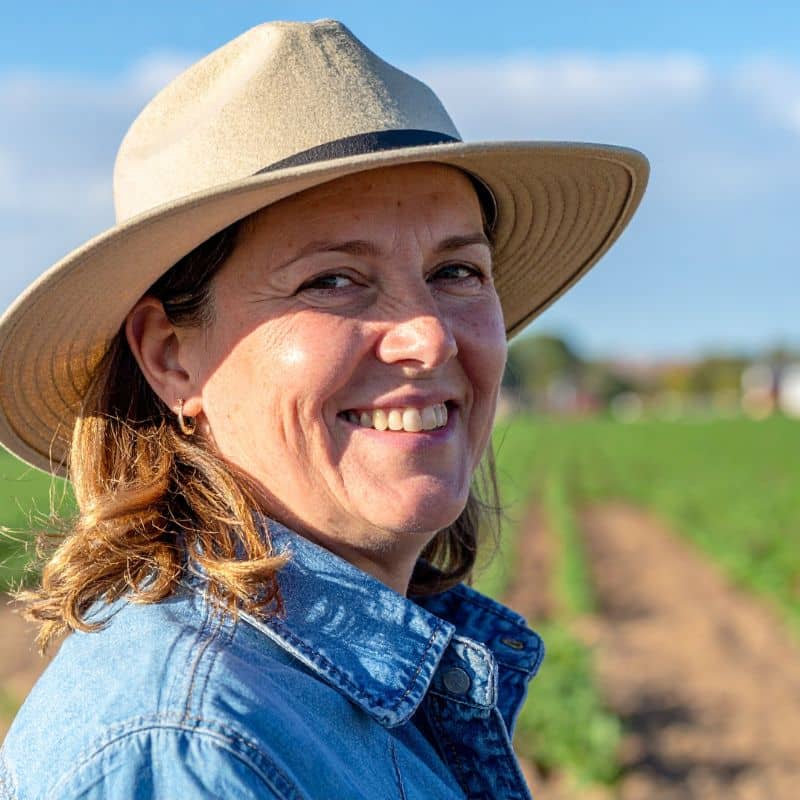
Co-Founder at Homesteading Simple | Horticulture & Sustainable Living Educator | 25 Years in Practical Homesteading

